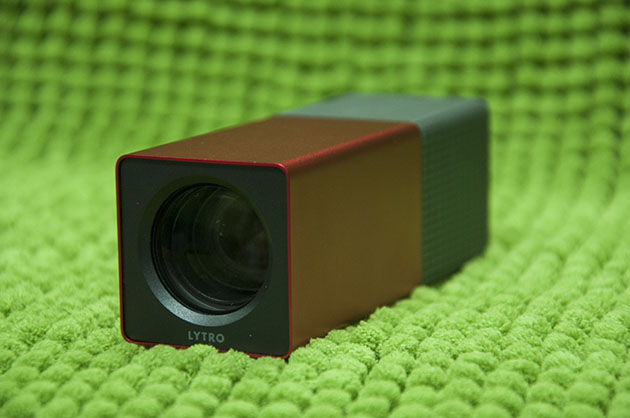
Spending a week with Lytro’s light field camera has done nothing to diminish its appeal. Now, a software update has brought the new features that were promised at its local launch. Have I changed my mind about the niche status of the device after spending more time with it?
Hardware and design
I’ve already gushed about the Lytro’s product design in my hands-on, so I won’t go so much into detail here. The design is still as appealing as the first time I picked it up. The combination of smooth aluminium and rubberised grip in a cuboid body that handles like a telescope is unmistakeable.
The controls are well placed. The power button and shutter button are on opposite faces of the cuboid, and a touch-sensitive strip above the shutter makes zooming relatively painless.
The LCD screen is touch enabled, and works a bit like the previous iPod nano, which means full of bezel swiping that may not be immediately apparent to the end user. It’s also terribly low-res, and there’s absolutely no way you can determine if the shot you just took is acceptable or not until you transfer it to your PC through a USB port.
Then again, the whole point of the Lytro is to not worry about the focus and concentrate only on the composition, so that’s not such a big deal. But this means it makes little sense to pass the Lytro around to let other people view your photos, as they really don’t look good.
The camera has no removable storage, so you’re stuck with either 8GB or 16GB. I would have appreciated a cheaper version of the Lytro with storage at a bare minimum, while giving users the flexibility of slotting in their own SD cards.
Due to its unique form, you may get weird looks when trying to take photos with the Lytro, but the action is by no means awkward. Just lift the camera up to your eye level as if you’re trying to look through a telescope, and press lightly on the shutter.
Taking pictures
Instead of going shutter-happy, however, I found myself taking more time to think about each shot.
Because of the ability to re-focus the photo even after it’s been taken, there would be no point in just taking, say, a plate of chicken rice like you always do. A well-composed “living picture” – as Lytro calls it – will turn out to be a lot more delightful than a plain ol’ shot.
The idea is to “hide” certain subjects in a picture in the out-of-focus areas, and have the user reveal them by clicking on it. The result really is a completely new paradigm in photography and new ways of thinking about your shot.
In other words, using the Lytro as a point-and-shoot replacement would be pointless. This camera caters more to the artistic crowd, people who like to think about and frame their shot before pressing the trigger.
It gets even better with manual controls. Automatic shooting leaves a lot to be desired on the Lytro, especially in tricky scenes such as those low in light. But a quick adjustment in ISO and shutter speed and you’re good to go.
Filters and perspective shift
On top of the existing features, a software update to be pushed out on December 4 will give Lytro users two new ways to play with their pictures.
The first new feature is called “living filters”, and lets users apply filters onto their pictures. But the type of filters you can do with Lytro pictures puts Instagram to shame.
Instead of merely tweaking a few colours or adding a frame to the photo, Lytro’s filters continue down the path of playing around with your perspectives. It’s really difficult to put these into words, so head on over to the sample gallery and let the pictures do the talking. Here’s one sample:
As the camera captures all the information from a particular scene, the software can selectively apply effects on whichever plane it chooses to. And the result, as you can see, is fantastic.
Then there’s the other new feature called “perspective shift”. In the photo below, try click-and-hold on any of the pictures, then move your mouse around. You’ll notice that the whole scene snaps into focus and then shifts as you move your mouse. It also works on the filtered photo above! The look and feel is really out of this world, and redefines what a “picture” really is. (More samples here)
These don’t automatically work with all previously uploaded photos, so if you already have an album on Lytro’s site, you’ll have to upload them all over again after applying the new effects.
Wrap up
The new features definitely takes Lytro’s picture revolution a step further, but at the same time, it doesn’t change my original conclusion: the camera is still very much a niche product that may only attract enthusiasts. Its high asking price — which can buy you an advanced point-and-shoot — also makes it difficult to recommend to anyone but photography enthusiasts.
The downsides I wrote about still stand: the proprietary LFP files are not as convenient as the ubiquitous JPGs, and there’s only one way to share these photos: you have to upload them to Lytro’s website before embedding in other mediums, such as Facebook or Twitter.
But if we look at the Lytro solely as a niche device, then I have no problem recommending it to people who want to get one and play around. It’s an interesting way of think about pictures, and shutterbugs will enjoy trying to frame that perfect shot. Showing off the pictures is also more fun, as your audience can interact with the picture instead of just looking.





